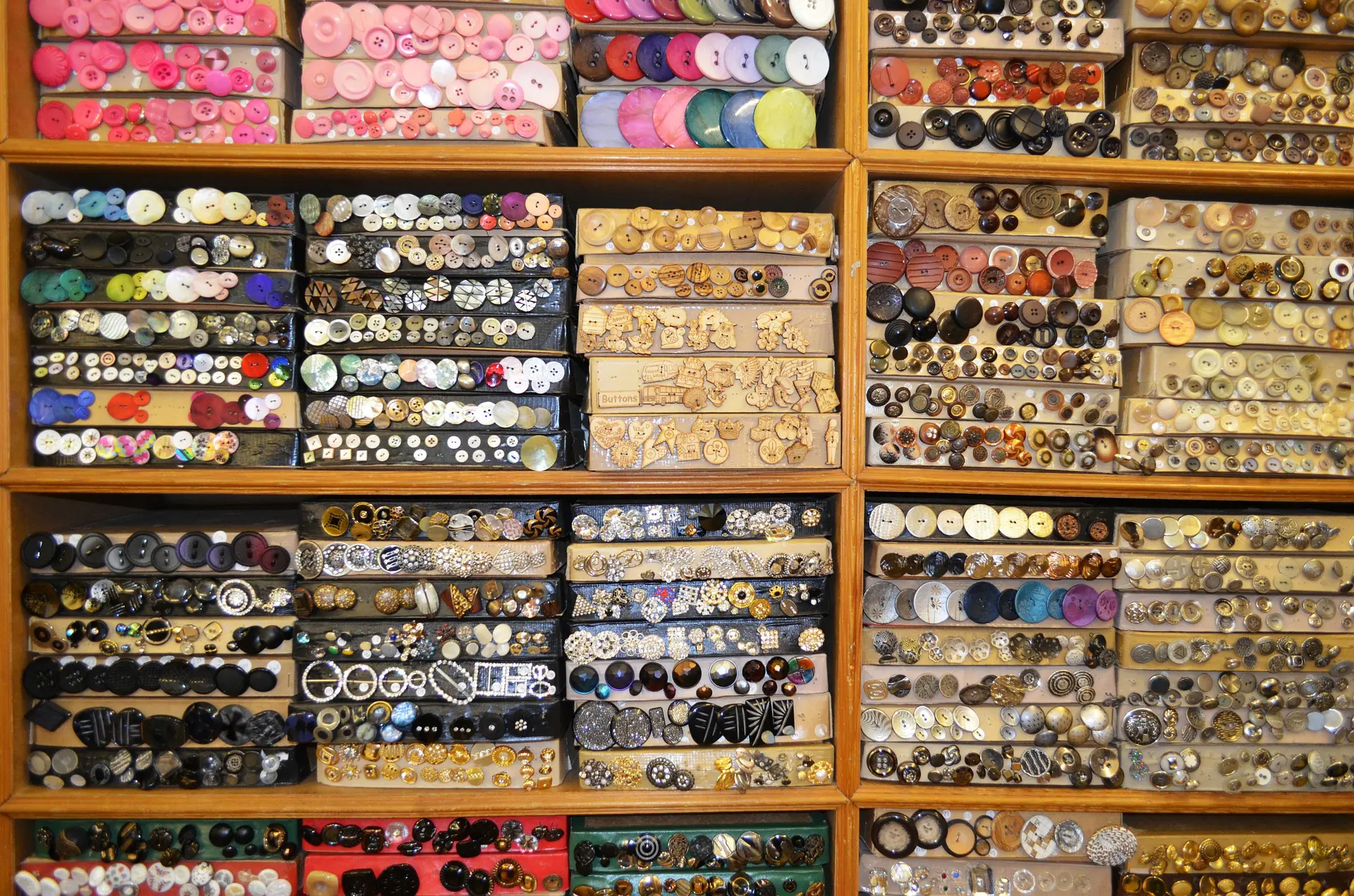Even though the fashion industry has an external veneer of style, class, and the exotic, it’s still an industry. There’s money to be made, people to be paid, and statistics to gather. That’s where this article comes in.
Below you can find relevant fashion industry statistics that show the cold, hard numbers behind this field. Just like any other industry, the world of fashion has data to be gathered about market shares, leading brands, environmental impact, and much more.
If you need pure facts and stats, check out this article.
Top 10 Fashion Statistics and Facts
- Online fashion retailers are on the rise—their market share is forecasted to reach 36% by 2022.
- Fashion companies with more leadership diversity have greater “innovation revenues.”
- Annually, about $460 billion worth of clothing is discarded.
- 93% of fashion and clothing brands don’t pay their workers adequately.
- Compared to 15 years ago, people wear their clothing less often before they throw it out (especially in high-income countries).
- Fashion model demographics are advancing in racial and age diversity…
- … but have regressed slightly in terms of size and gender.
- In 2018, the global costume jewelry industry reached $25.2 billion in value.
- Under Armour, H&M, and Walgreens have suffered a severe decline in 2020.
- Lululemon, Costco, and Amazon are the fastest-growing retail brands when it comes to fashion and clothing.
Diversity and the Environment in Fashion
1. Fashion industry statistics reveal that fashion companies with more leadership diversity have greater “innovation revenues.”
(Vogue Business)
Innovation revenue is gained by introducing innovation to products and services. This includes new products and services, but also enhancements of the existing ones. Relevant industry data show that companies with greater diversity at the top show 19% higher innovation-revenue levels.
2. According to 2018 data, the fashion industry produced 2.1 billion tonnes of CO2eq.
(Global Fashion Agenda)
This number is higher than the CO2 pollution generated by the United Kingdom, Germany, and France together. As fashion waste statistics clearly tell us, the impact this industry has on the environment is substantial—roughly 4% of all carbon emissions stems from it. Moreover, 38% of these emissions comes from material production, 20% from product use, and 15% from “wet processes.”
3. Compared to 15 years ago, people wear their clothing less often before they throw it out (especially in high-income countries).
(Ellen MacArthur Foundation)
On a global scale, clothing is used 36% less than just 15 years ago. Global apparel industry statistics show that while low-income countries try to utilize their clothes as much as possible, underutilization is ever more present in high-income parts of the world.
In the US, clothes are thrown out after a period that’s 25% of the global average. China’s utilization rate, for example, has dropped by 70% compared to where they were 15 years ago.
4. 93% of fashion and clothing brands don’t pay their workers adequately.
(Fashion Checker)
According to clothing industry statistics, a large majority of this industry doesn’t pay its workers a living wage. They can barely (if at all) afford bare necessities. These workers’ salaries aren’t enough to cover a varied diet, quality housing, their children’s educational costs, creating a nest egg, etc.
5. The majority of workers in this industry are women (and they are treated poorly).
(Fashion Checker) (Fashion Checker)
Globally speaking, roughly 80% of the clothing industry workers are women. One of the most unpleasant fashion industry facts is that these women work in abysmal conditions. They often face harassment, verbal and physical abuse, exhaustion, and a great deal of job insecurity, among other issues.
6. Fixing environmental and social issues caused by the clothing and fashion industry can significantly benefit the global economy.
(Ellen MacArthur Foundation)
From a purely economic, practical standpoint, there are great benefits from making the fashion industry more environmentally and socially conscious. According to sustainable fashion statistics, by 2030, these changes could add $192 billion to the global economy.
7. Annually, about $460 billion worth of clothing is discarded.
(Ellen MacArthur Foundation)
Fashion industry pollution statistics are quite unambiguous about the global underutilization of clothes. For instance, 60% of China’s and Germany’s citizens admit that they own more clothing items than they actually need.
8. Fashion model demographics are advancing in racial and age diversity…
(The Fashion Spot)
According to fashion model statistics obtained on the basis of 2019’s runways in London, Paris, and Milan, diversity is getting better in some areas and worse in others. A survey of 221 runways (7,300 models) showed that 38.8% of models were people of color. This indicates a 17% increase compared to 2015. New York has been shown as the most diverse of the abovementioned cities when it comes to race, with 45.8% of the models being women of color. Paris came in second with 39%, followed by London (35.7%). Milan came in last, at 31.8%.
9. … but have regressed in terms of size and gender.
(The Fashion Spot)
In 2019, only 0.69% of the models that walked the main fall runways were plus-sized. Furthermore, fashion modeling industry statistics show that these numbers were at 0.73% during the 2019 spring shows.
2019’s spring runways had a 1.23% presence of non-binary and transgender models. Fall, however, only had 0.77%, almost half of where they had been just six months earlier.
Global Fashion Industry Statistics
10. Emerging countries are slowly gaining a larger share of the luxury apparel market.
(McKinsey & Company)
Fashion industry growth is not only reserved for developed countries. About 16 years ago, economically emerging countries had a 7% share of the global luxury apparel market. This number has reached 14% relatively recently, and it’s expected to have risen to about 25% by the end of 2025.
11. In 2018, the global costume jewelry industry reached $25.2 billion in value.
(Grand View Research)
Recent fashion jewelry industry statistics show just how strong this industry can be. According to Grand View Research’s data, there’s an increased market demand for these products. This demand is tied to the increase in affordable options within this field, as well as rising disposable incomes.
Grand View Research expects continued growth in this area for the future due to more online platforms being developed, but also the growing presence of trusted sellers. They do warn, however, that an increase in raw material prices can hamper this growth.
General Stats and Facts on the Fashion Industry
12. Online fashion retailers are on the rise—their market share is forecasted to reach 36% by 2022.
(Forrester)
Forrester’s reports and fashion statistics show that in 2018, 27% of all retail sales for this industry were conducted online. Brick and mortar stores have been closing, losing their shoppers’ attention to digital platforms.
13. A 50% increase rate is expected in the women’s apparel market growth over the following twelve years.
(McKinsey & Company)
Standard women’s clothing industry statistics show an annual increase of 3%. However, there are expectations that this number will reach 5% per year by the end of 2025. A substantial part of this increase will rely on mid-market apparel, whose current 37% market share will likely surpass 50% by 2025.
14. Lululemon, Costco, and Amazon are the fastest-growing retail brands when it comes to fashion and clothing.
(Visual Capitalist)
Fashion industry growth rate levels are better for lululemon (the Canadian athletic apparel brand), Costco (US), and Amazon (US). What number one and three have in common, according to Visual Capitalist, is that they rely on online shopping. This has most likely led to their stability and growth during the pandemic. In 2020, lululemon had a 40% growth compared to 2019. Costco saw a 35% increase, while Amazon had an increase rate of 32%.
15. Under Armour, H&M, and Walgreens have suffered a severe decline in 2020.
(Visual Capitalist)
While some companies have actually grown during the pandemic, other brands are experiencing difficulties. Fashion industry statistics for 2020 show that, compared to 2019, Under Armour has had a 34% drop in brand value. H&M is weaker by 27%, while Walgreens’ value has decreased by 26%.
16. The strongest fast fashion retail group in Europe is Inditex, located in Spain.
(Statista)
According to fast fashion statistics, this group had the highest number of units sold in 2018, reaching 2.9 billion items sold. It’s important to note that this company owns multiple brands, among them being Massimo Dutti, Mango, and Zara.
17. By 2022, the e-commerce segment of the fashion industry will likely reach $712.9 billion in global revenue.
(Shopify Plus)
There are several reasons why e-commerce is expected to improve significantly by 2022. An innovation within technologies that make e-commerce an overall better experience, greater access to the Internet and smartphones, and a general expansion outside Western markets are core factors. Fashion industry statistics also show that personalization is the most important factor when it comes to e-commerce apparel growth.
FAQ
Is the fashion industry growing or declining?
There has been substantial growth within the fashion industry between 2016 and 2019. More precisely, this period was marked by a 21% rise, mostly thanks to fast-fashion retailers. On the other hand, numerous “high street” retailers are actually struggling.
(Econsultancy)
How much waste does the clothing industry produce?
The numbers are rather disheartening. This industry generates an annual 92 million tons of waste. To make matters worse, these numbers will most likely keep increasing over the following years. By the time we reach 2030, there will be a 60% increase compared to where we were in 2015—a shocking 148 million tons of textile waste a year!
(Fashion Revolution)
What country is the leader in the fashion industry?
The answer to this question depends on what exactly you mean by “leader.” From the economic aspect, China is number one, since it’s the world’s largest exporter of clothing. In 2019, it carried 30.8% of the global share. It was followed by the entirety of the European Union (27.6%), Bangladesh (6.8%), and Vietnam (6.2%).
(Fashion Schools) (Statista)
Conclusion
The world of fashion is an incredibly lucrative one, whether we’re talking about fast fashion or luxury lines presented on the Paris runways. The fashion industry statistics we’ve shared here hopefully gave you a clear picture of the reality of the industry, of how varied and impactful it actually is. If you have any questions or simply want to share your thoughts on this topic, feel free to leave us a comment.










